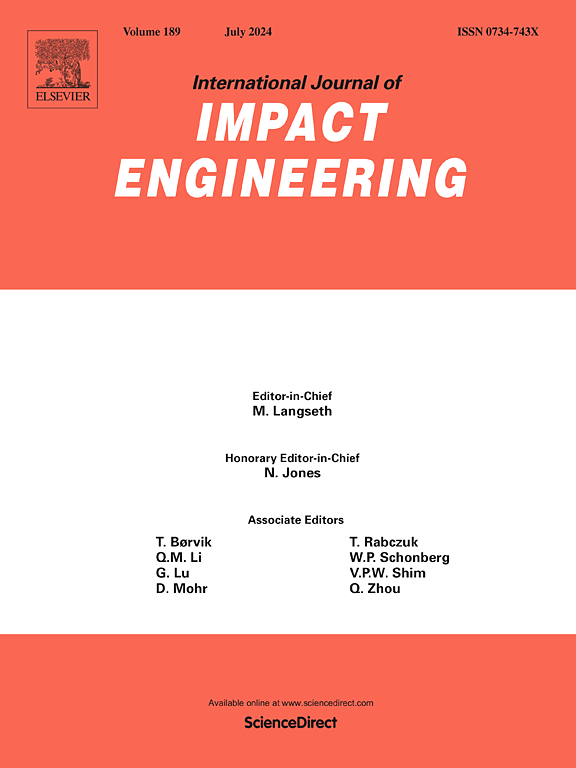Effect of high-strength rebar and ultra-high-performance concrete on blast resistance of slabs under contact explosion loads
IF 5.1
2区 工程技术
Q1 ENGINEERING, MECHANICAL
International Journal of Impact Engineering
Pub Date : 2025-01-19
DOI:10.1016/j.ijimpeng.2025.105230
引用次数: 0
Abstract
This study examines the effects of 630 MPa rebar (T63) on the blast resistance of reinforced concrete (RC) structures designed for civil air defense. Five RC slabs were prepared with varying reinforcement ratios, rebar strengths, and concrete grades. Conducted under various blast load equivalents, contact explosion tests assessed the influence of T63 rebar and ultra-high-performance concrete (UHPC) on macroscopic damage, damage modes, and the dynamic stress-strain response of the slabs. Key observations included crack development, and measurements of crater area, diameter, and depth on both the front and rear blast surfaces, as well as acceleration and strain responses. The results showed that RC slabs reinforced with T63 rebars exhibited reduced damage and lower peak acceleration responses compared to those reinforced with HRB400 rebars under the same blast load equivalent, indicating superior blast resistance. As the blast load increased, cratering on the front blast surface and spalling on the rear became more pronounced for both reinforcement types. However, while HRB400-reinforced slabs were penetrated, slabs with T63 rebar and UHPC demonstrated significantly reduced damage. Additionally, computational analysis of the damage model indicated that traditional methods underestimated the blast resistance of RC slabs with T63 high-strength rebar and UHPC.
求助全文
约1分钟内获得全文
求助全文
来源期刊

International Journal of Impact Engineering
工程技术-工程:机械
CiteScore
8.70
自引率
13.70%
发文量
241
审稿时长
52 days
期刊介绍:
The International Journal of Impact Engineering, established in 1983 publishes original research findings related to the response of structures, components and materials subjected to impact, blast and high-rate loading. Areas relevant to the journal encompass the following general topics and those associated with them:
-Behaviour and failure of structures and materials under impact and blast loading
-Systems for protection and absorption of impact and blast loading
-Terminal ballistics
-Dynamic behaviour and failure of materials including plasticity and fracture
-Stress waves
-Structural crashworthiness
-High-rate mechanical and forming processes
-Impact, blast and high-rate loading/measurement techniques and their applications
 求助内容:
求助内容: 应助结果提醒方式:
应助结果提醒方式:


